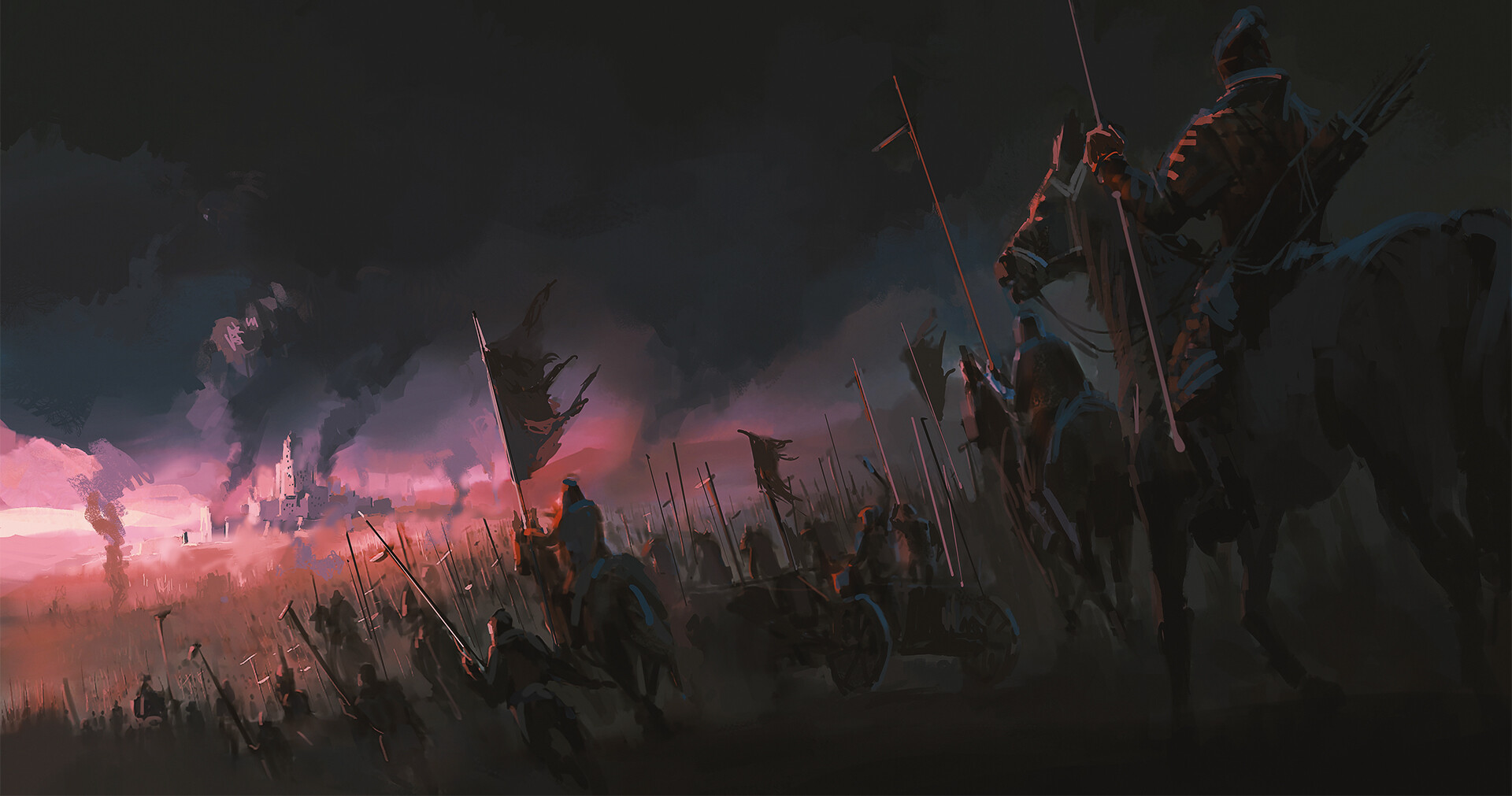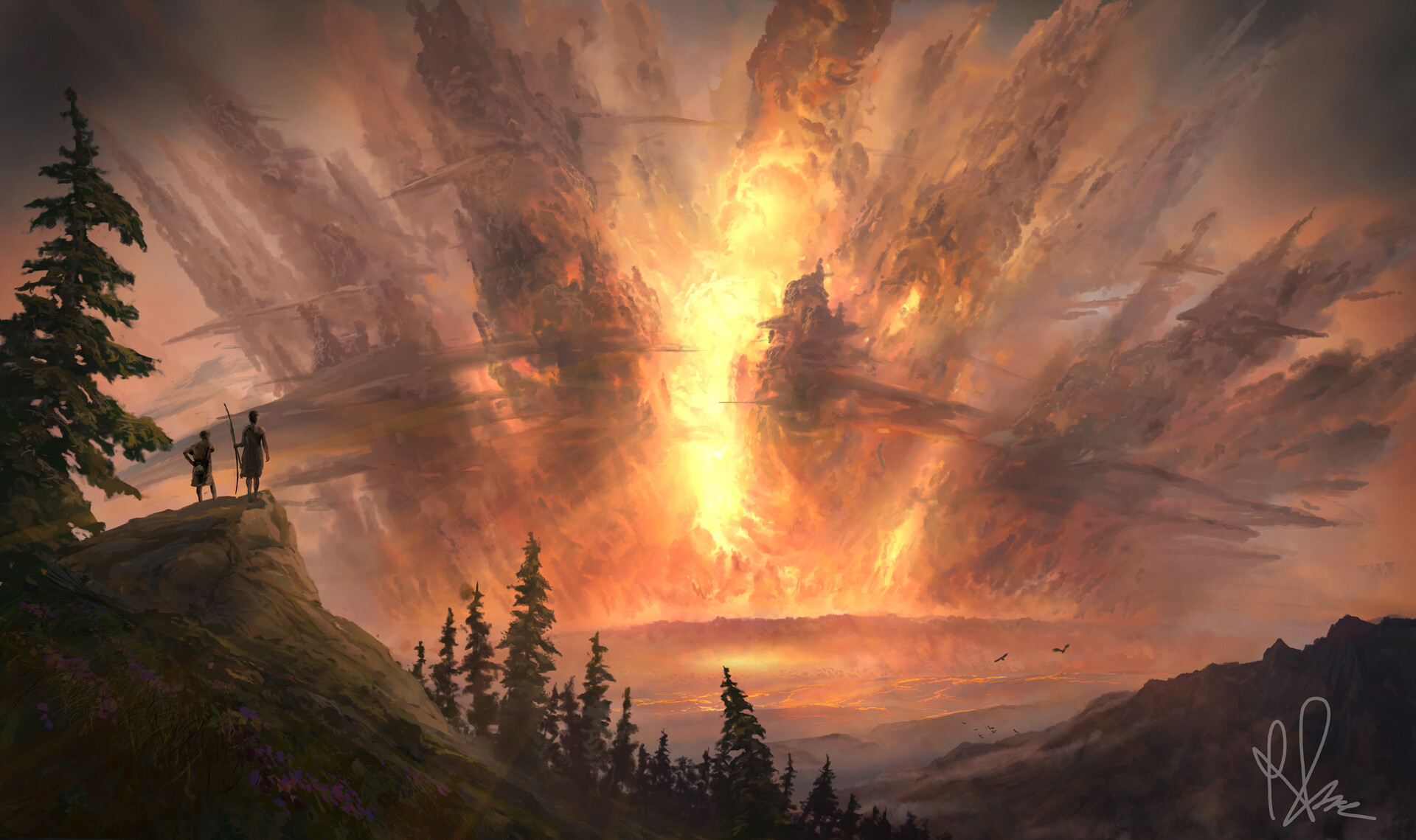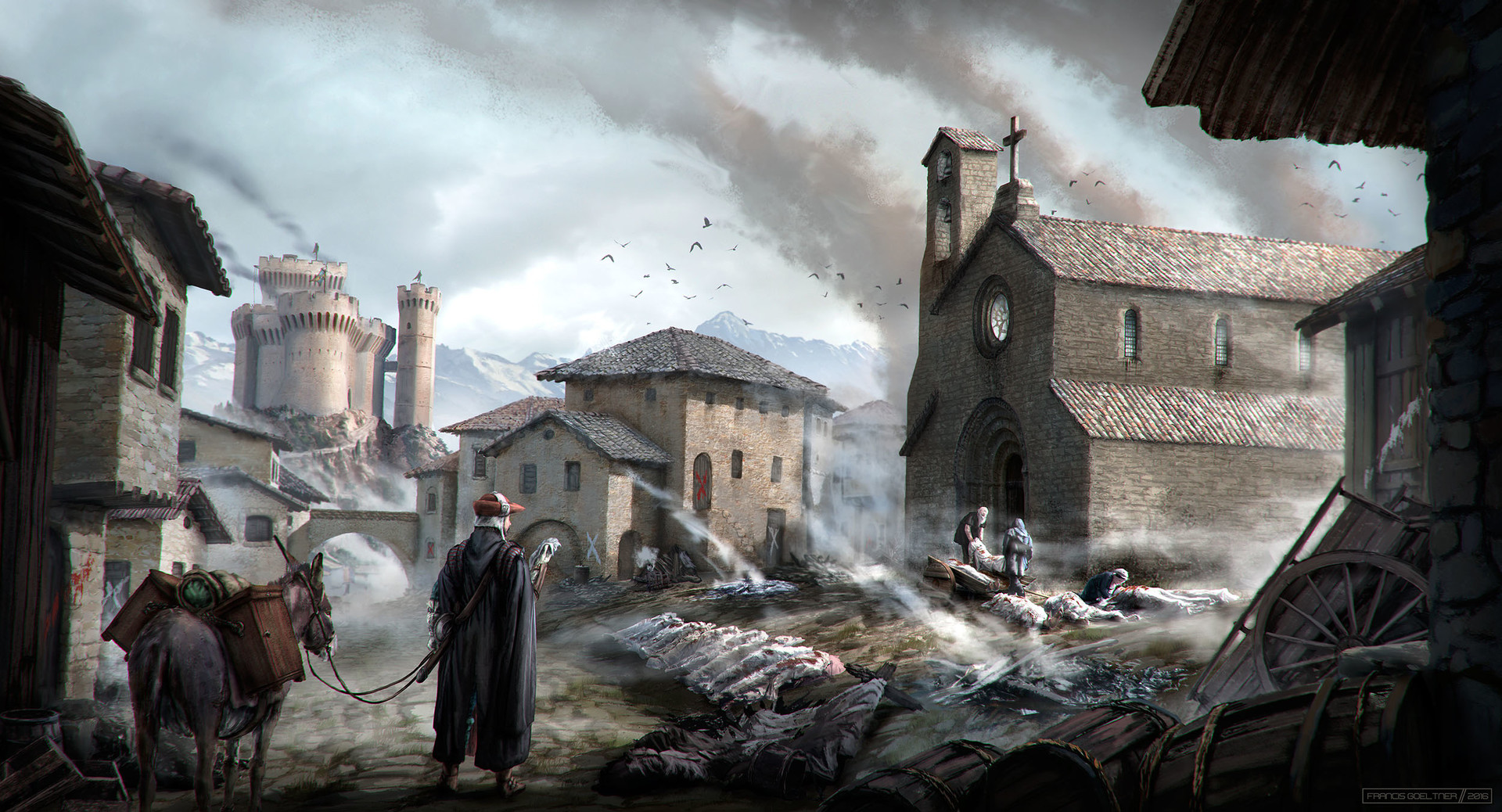Hour of the Ashen Skies
Year after year goes by and one seems darker than the other. Everywhere you go you only here of plague and famine and darkening skies. For once the doom singers might truly be right and the world is already on its way to another Oblivion Hour.The 2nd Millennium of the Dawn Age was by all accounts a golden age for humanity. As the climate grew increasingly friendly, mankind thrived and spread, the wounds of the Oblivion Hour slowly but surely forgotten. But as the 3rd Millennium dawned something began to change. The world entered a period of cooling climate and worsening weather. A time when famine and plague raced across the Great Divide and took lives in previously unimaginable numbers. No region under the sun was spared. Future generations would know it simply as the Great Decline.
Worldwide Downturn

by zishan Liu
Notable Events
- Rhomeian Dark Age:
The general collapse of the Rhomeian Empire is accelerated by the climatic downturn. A series of plagues kills up to one-third of the population between 2510 and 2601 DA.
- Vitrian Hegemony:
Aided by the worsening climate, the Vitrians are able to excert control over the weakened Vardanians. However, a series of draughts that hit their homelands beginning in the 25th century will contribute to their eventual downfall.
- Mykonian Migrations:
As northern lands grow increasingly hostile, the Mykonians begin to move south in larger numbers. By 2700 DA, they will have overran much of northern Scetia and displace or assimilate most of the native Atheryans.
- Heronian Fauna Vanishes:
Several large animal species that previously inhabitated the valleys of Heronia go extinct. One theory suggests that the increasingly dry climate left them with not enough plantlife to sustain themselves.
- Rising Spirituality:
Cultures across the world note a rise in spirituality as an increasing number of people seek comfort in religion. Art, literature and philosophical thought take one a distinctly religious notion, themes of decay and death being most prominent.
Memento Mori - the remembrance of death. While it has always been present in one way or another, the latter half of the 3rd millennium saw it dominate art in pretty much all its forms. Its presence in daily life must have been suffocating.
Start Date
2100 DA
Ending Date
3200 DA
Conflict Result
Minor Ice Age. Global Harvest Failures and Plague Outbreaks. Northern Migrations Begin. General Decline of Civilization.
I have no fear of death,Volcanic Winter? One popular theory suggests that the sudden fall in global temperatures was caused by a large volcanic eruption in the northern parts of the world. This is supported by the fact that temperature falls have also been noted after events such as the Brightflame Hour in 3199 and the Etrian Eruption in 707. However, these lasted for a few years, or decades in the former case. An event that could cause a century-long downturn must have been quite a few magnitudes larger. It was a Mykonian myth that led scientists to another possibility. The tale, dated to around 2000 DA, tells of a great roar in the far north and of "strikingly strange lights" that filled the skies. Sometime after, the cooling began and started to drive the Mykonians south. Based on this description a new theory states that the Mykonians, who previously had settled in lands further north than any in the known world, had been witness to a previously unknown Great Strike. The calamity, now dubbed Darkening Hour, is handled to be one possible cause for the decline.
For its embrace is inevitable,
The end is forever,
Its beauty everlasting.

by Ryan Lowe
Remove these ads. Join the Worldbuilders Guild




I love the thought you put into this event and it's impact on the world.
Necromancy is a Wholesome Science.